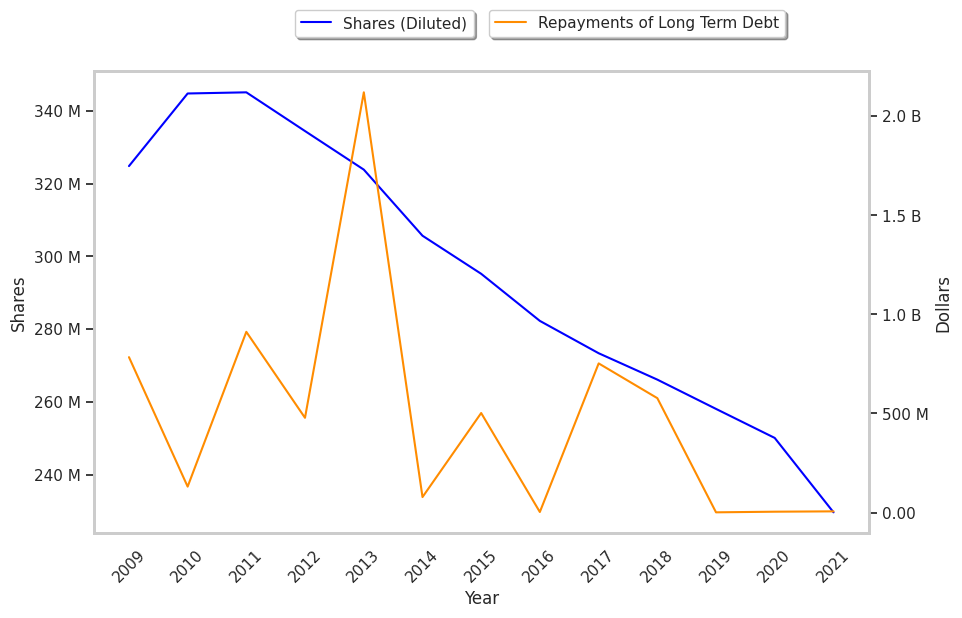Dollar General does not have the profile of a defensive investment based on the requirements of Ben Graham. The Department Store firm may nonetheless be of interest to more risk-oriented investors who have a solid thesis on the company's future growth. At Market Inference, we remain agnostic as to such further developments, and prefer to use a company's past track record as the bellwether for future potential gains.
Dollar General Is Probably Overvalued
Graham devised the below equation to give investors a quick way of determining whether a stock is trading at a fair multiple of its earnings and its assets:
√(22.5 * 6 year average earnings per share (7.29) * 6 year average book value per share (28.695) = $80.08
At today's price of $111.16 per share, Dollar General is now trading 38.8% above the maximum price that Graham would have wanted to pay for the stock.
Even though the stock does not trade at an attractive multiple, it might still meet some of the other criteria for quality stocks that Graham listed in Chapter 14 of The Intelligent Investor.
Impressive Revenues, Consistent Profitability, and a Growing Dividend Imply Value
Dollar General’s average sales revenue over the last 6 years has been $39.93 Billion, so by Graham’s standards the stock has sufficient revenues to make it worthy of investment. When published in 1972, Graham’s threshold was $100 million in average sales, which would be the equivalent of around a half million dollars today.
Ben Graham believed that a margin of safety could be obtained by investing only in companies with consistently positive retained earnings. Retained earnings represent the cumulative net earnings or (deficit) left to equity holders after dividends have been paid out. Dollar General had positive retained earnings from 2011 to 2023 with an average of $2.19 Billion over this period.
Ben Graham would also require a cumulative growth of Earnings Per Share of at least 30% over the last ten years.To determine Dollar General's EPS growth over time, we will average out its EPS for 2010, 2011, and 2012, which were $0.37, $0.50, and $0.62 respectively. This gives us an average of $0.50 for the period of 2010 to 2012. Next, we compare this value with the average EPS reported in 2021, 2022, and 2023, which were $2.62, $10.17, and $10.68, for an average of $7.82. Now we see that Dollar General's EPS growth was 1464.0% during this period, which satisfies Ben Graham's requirement.
Negative Current Asset to Liabilities Balance and Not Enough Current Assets to Cover Current Liabilities
Graham sought companies with extremely low debt levels compared to their assets. For one, he expected their current ratio to be over 2 and their long term debt to net current asset ratio to be near, or ideally under, under 1. Dollar General fails on both counts with a current ratio of 1.0 and a debt to net current asset ratio of -0.3.
Conclusion
According to Graham's analysis, Dollar General is likely a company of average quality, which does not offer a significant enough margin of safety for a risk averse investor.
| 2017-03-24 | 2018-03-23 | 2019-03-22 | 2020-03-19 | 2021-03-19 | 2022-03-18 | |
|---|---|---|---|---|---|---|
| Revenue (MM) | $21,987 | $23,471 | $25,625 | $27,754 | $33,747 | $34,220 |
| Gross Margins | 31.0% | 31.0% | 30.0% | 31.0% | 32.0% | 32.0% |
| Operating Margins | 9% | 9% | 8% | 8% | 11% | 9% |
| Net Margins | 6.0% | 7.0% | 6.0% | 6.0% | 8.0% | 7.0% |
| Net Income (MM) | $1,251 | $1,539 | $1,589 | $1,713 | $2,655 | $2,399 |
| Net Interest Expense (MM) | -$98 | -$97 | -$100 | -$101 | -$150 | -$158 |
| Depreciation & Amort. (MM) | -$380 | -$404 | -$454 | -$505 | -$574 | -$641 |
| Earnings Per Share | $4.43 | $5.63 | $5.97 | $6.64 | $10.62 | $10.45 |
| EPS Growth | n/a | 27.09% | 6.04% | 11.22% | 59.94% | -1.6% |
| Diluted Shares (MM) | 282 | 273 | 266 | 258 | 250 | 230 |
| Free Cash Flow (MM) | $2,156 | $2,447 | $2,875 | $3,020 | $4,901 | $3,931 |
| Capital Expenditures (MM) | -$551 | -$645 | -$732 | -$782 | -$1,025 | -$1,066 |
| Net Current Assets (MM) | -$2,588 | -$2,143 | -$2,124 | -$10,945 | -$12,287 | -$13,762 |
| Long Term Debt (MM) | $2,711 | $2,605 | $2,863 | $2,912 | $4,131 | $4,172 |



